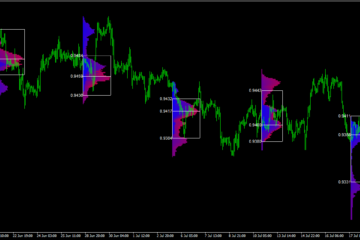The world of online trading moves fast. Especially in the Forex market, where prices change by the second and execution speed can make or break a deal.
For brokers and institutional traders using MetaTrader 4 (MT4)—one of the world’s most popular trading platforms—there’s a powerful tool that unlocks serious control and flexibility: the MT4 FIX API.
What Is MT4 FIX API ?
FIX stands for Financial Information eXchange. It’s a global messaging standard developed to allow financial systems to “talk” to each other instantly.
Think of FIX as a common financial language that allows one trading system to send and receive orders, prices, account updates, and confirmations to another—no matter what platform each is using.
FIX API is widely used in:
- Banks and institutional trading
- Hedge funds and asset managers
- High-frequency trading firms
- Forex and CFD brokerages
It allows you to automate trading, connect to liquidity providers, and integrate backend systems, all with speed and reliability.
So, What Is MT4 FIX API?
The MT4 FIX API is a special integration layer that connects third-party systems with MetaTrader 4 using the FIX protocol.
MT4 itself does not natively support FIX API. That’s why most brokers rely on bridges or external gateways that create this link.
With MT4 FIX API in place, you can:
- Send trade orders to MT4 from external software
- Fetch real-time price quotes and market data
- Automate trade execution and reporting
- Connect to external liquidity providers or banks
- Build custom dashboards, apps, or risk management systems
It’s like opening a high-speed pipeline between your MT4 server and any system that speaks FIX.
Why MT4 FIX APIS Still Matters in 2025
While many brokers are migrating to MT5, MT4 remains dominant due to its simplicity, wide adoption, and huge trader base.
Thousands of brokers still offer MT4, especially in Asia, Africa, and parts of Europe. Many clients prefer it for its speed, low resource usage, and familiar interface.
By adding FIX API to MT4, brokers can bring modern, institutional-level features to an older platform—without losing their loyal trader base.
How MT4 FIX API Works (Simplified)
Here’s a non-technical explanation:
Let’s say:
- You have a client portal or trading algorithm.
- You want it to talk directly to your MT4 server.
- But MT4 doesn’t understand standard FIX messages.
The solution:
- You set up a bridge or FIX gateway.
- This system receives FIX messages, translates them, and sends them to MT4 in a format it understands (like Manager or Server API).
- The response is translated back into FIX format and sent to your software.
Everything happens in milliseconds. It’s fast, reliable, and works behind the scenes.
Who Needs MT4 FIX API?
MT4 FIX API is most useful for:
Forex Brokers
Want to automate deposits, orders, reporting, and client onboarding? FIX API gives you the backend access you need.
Liquidity Providers
FIX API allows banks and LPs to plug directly into a broker’s MT4 system to send price feeds and execute trades.
Institutional Clients
Hedge funds or HFT firms often require FIX API access to execute trades through their own platforms while using MT4 as the backend.
Fintech Startups
If you’re building your own app, wallet, or dashboard but want to use MT4 as the trade engine, FIX API makes it possible.
Benefits of MT4 FIX API Integration
Speed
FIX is designed for ultra-low latency. Orders are placed and confirmed in milliseconds, ideal for scalpers and institutions.
Automation
Automate every part of the trading cycle—from order routing to settlement and reporting.
System Integration
Connect your CRM, back-office tools, KYC systems, analytics dashboards, or payment gateways directly to your trading infrastructure.
Real-Time Market Access
Get live prices, depth of market, spreads, and execution updates directly from the MT4 platform.
Customization
Build trading apps, dashboards, bots, and platforms tailored to your business—without relying on MetaTrader UI.
Challenges With MT4 FIX API
Before jumping in, here are a few things to keep in mind:
MT4 Doesn’t Support FIX Natively
You’ll need a third-party bridge or FIX gateway to connect FIX-enabled systems to MT4.
Setup Can Be Technical
FIX messages follow strict formats. Integration requires developers familiar with FIX protocol and MT4’s internal APIs.
Licensing Costs
FIX bridges often come with setup and license fees. Hosting, server load, and maintenance also add to cost.
Error Handling
Without careful testing, incorrect message formatting or dropped connections can lead to failed trades or sync issues.
Best Practices for MT4 FIX API Integration
If you’re serious about using FIX with MT4, follow these tips:
Choose a Trusted Bridge Provider
Look for providers with experience in FIX-to-MT4 connections. They’ll offer support, documentation, and updates.
Test Everything in Demo Mode
Set up a sandbox environment with dummy accounts and fake orders. Simulate high volume and edge cases.
Secure the Pipeline
Use encrypted connections, IP whitelisting, and firewall rules to protect your FIX sessions.
Monitor Latency and Uptime
Track how long orders take and keep an eye on dropped or rejected messages.
Work With Experts
If you’re not familiar with FIX, partner with firms like ForexCRMTech.com who can guide integration and provide FIX-ready CRM modules.
MT4 FIX API vs. MT5 FIX API: Key Differences
| Feature | MT4 FIX API | MT5 FIX API |
| Native FIX Support | ❌ No (Requires bridge) | ✅ Yes |
| Platform Architecture | Simpler, single-threaded | Multi-asset, multi-threaded |
| Speed | Fast, but limited by architecture | Optimized for high-frequency |
| Multi-Asset Support | Forex & CFDs only | Forex, stocks, futures, etc. |
| Long-Term Future | Still widely used | More future-ready |
MT4 FIX API is still highly relevant, especially in regions and firms that continue to rely on MT4’s lightweight structure.
How to Get Started With MT4 FIX
Here’s a simple step-by-step to kick off your integration:
Step 1: Define Your Use Case
Are you looking to offer FIX to clients? Connect to LPs? Automate backend operations?
Step 2: Choose a Bridge Provider
Research providers that offer FIX bridges for MT4. Ensure they support the FIX version you need (like FIX 4.2 or 4.4).
Step 3: Setup and Configuration
Your provider will help you install and configure the FIX gateway. You’ll define message types, IPs, ports, and security rules.
Step 4: Connect and Test
Start sending test orders, cancel requests, and pulling prices. Watch how the MT4 server responds.
Step 5: Go Live and Monitor
Once you’ve tested thoroughly, switch to the live environment. Use monitoring tools to track performance and errors.
Final Thoughts
The MT4 FIX API is a powerful tool that bridges old-school reliability with modern trading demands. Whether you’re building a custom trading solution, managing institutional flow, or connecting to liquidity sources, FIX gives you the speed and control MT4 alone can’t offer.
In 2025, as newer platforms evolve, MT4 remains a rock-solid choice for many brokers and traders. By adding FIX API capabilities, you make it smarter, faster, and more scalable—without changing the core.
If you’re looking to integrate MT4 FIX into your infrastructure, solutions like ForexCRMTech.com can help you get up and running with CRM, bridge, and FIX connectivity under one unified system.
FAQs
1. Does MetaTrader 4 have FIX API built-in?
No. MT4 does not natively support FIX. You need a third-party FIX bridge to use FIX API with MT4.
2. What can I do with MT4 FIX?
You can automate trading, connect to liquidity providers, integrate CRMs, build dashboards, and much more.
3. Is MT4 FIX only for large brokers?
Not at all. Even small and medium brokers use FIX to offer premium services, especially to high-volume clients.
4. How fast is FIX API compared to MT4 Manager API?
FIX API is faster and better suited for high-frequency, low-latency environments. It also supports more automation.
5. How much does MT4 FIX integration cost?
Costs vary by provider. You’ll typically pay for the FIX bridge license, plus setup and support.





